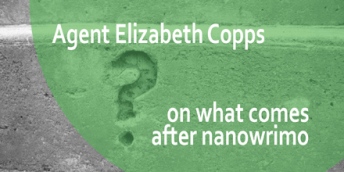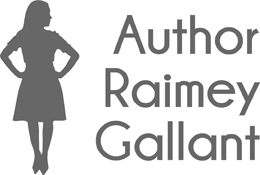
 Elizabeth Copps began her publishing career in 2010 as an intern for Maria Carvainis Agency, Inc. She was thrilled to join MCA full-time in 2011. She is currently seeking character-driven contemporary, literary, and women’s fiction, psychological thrillers and mysteries, and YA and middle grade fiction. Query her at mca@mariacarvainisgaency.com, follow her on Twitter and learn more via Manuscript Wish List.
Elizabeth Copps began her publishing career in 2010 as an intern for Maria Carvainis Agency, Inc. She was thrilled to join MCA full-time in 2011. She is currently seeking character-driven contemporary, literary, and women’s fiction, psychological thrillers and mysteries, and YA and middle grade fiction. Query her at mca@mariacarvainisgaency.com, follow her on Twitter and learn more via Manuscript Wish List.
Should Wrimos rush to send their manuscripts to agents/publishers?
Short answer? No. Don’t get me wrong, I love the concept of NaNoWriMo. It acts as a both a motivator and a community builder. But I really believe it should be viewed as a tool for hammering out a rough draft. I would argue that it is impossible to pen a book length work in a month that is really and truly polished and submission ready. Think of the initial draft of your manuscript like…a raw steak that should marinate for a bit before it’s just tossed on the grill. You want to give yourself proper time to go back, read, and revise where necessary: you only get one shot with most agents, so make sure you are sending your very best work.
Does 50,000 words a novel make?
It depends on the genre. Publishers have standard ranges, so the word count is going to be different depending on whether you’re writing middle grade or sci-fi or literary fiction, etc. There are those outliers and exceptions to the rule every now and then, so sure, you could potentially write a work of adult commercial fiction that clocks in around 50k. For example, James Patterson created an imprint under Hachette called “Book Shots”, which publishes thrillers all under 150 pages. Chuck Sambuchino wrote a helpful blog post via Writer’s Digest concerning word count for those unsure of what normal ranges should look like.
What are the steps a novice writer should take before hitting send on that agent query? Hone your elevator pitch. A well-placed line or two in the first paragraph describing the heart of the story is a smart tactic. For practice, consider participating in Twitter events like Pitch Wars or Pit Mad. Or just search the hashtags for ideas. Try not to  info dump from the get-go in your query letter. The title, genre, and word count should ideally be in the first paragraph as well. Next comes the description of the work. This should read similarly to a blurb on a book jacket. And, think about complementary titles—it shows you’ve done your research and you have a nice understanding of the current market. Example: “This book would appeal to fans of___.” Or, “My novel is a mix of___ and ___.” Third is biographical information. Have you been previously published? Won any awards? Do you have a primary profession and is it related to what you’re writing about? This can also be the time to include social media links: a website, Twitter, Facebook, Tumblr, etc. Alternatively these links can appear under your signature. Jane Friedman’s post on The Complete Guide to Query Letters is a wonderful reference.
info dump from the get-go in your query letter. The title, genre, and word count should ideally be in the first paragraph as well. Next comes the description of the work. This should read similarly to a blurb on a book jacket. And, think about complementary titles—it shows you’ve done your research and you have a nice understanding of the current market. Example: “This book would appeal to fans of___.” Or, “My novel is a mix of___ and ___.” Third is biographical information. Have you been previously published? Won any awards? Do you have a primary profession and is it related to what you’re writing about? This can also be the time to include social media links: a website, Twitter, Facebook, Tumblr, etc. Alternatively these links can appear under your signature. Jane Friedman’s post on The Complete Guide to Query Letters is a wonderful reference.


Awesome post, Raimey. Very informative. I like to take my time. I’m still editing Book 1. Put it down for a minute, and started writing Book 2 for NaNoWriMo. I’m just moving too slow, I guess.
Thanks for sharing this.
LikeLiked by 2 people
This is so helpful! I have a lot of know-how when it comes to screenplay submissions but not much with novels. It’s a big weakness of mine. This was so useful!! Thanks, Raimey and Elizabeth!
Is an elevator pitch for novels about the same as for screenplays? The idea being it’s short enough and detailed enough that you could pitch it if you were in an elevator with someone you wanted to sell to?
Thanks again!
LikeLiked by 1 person
From what I’ve read, they’re similar, but it’s a good idea to do more research. Also, 20 people will give you 20 opinions.
LikeLiked by 1 person
Haha, true that!
LikeLiked by 1 person